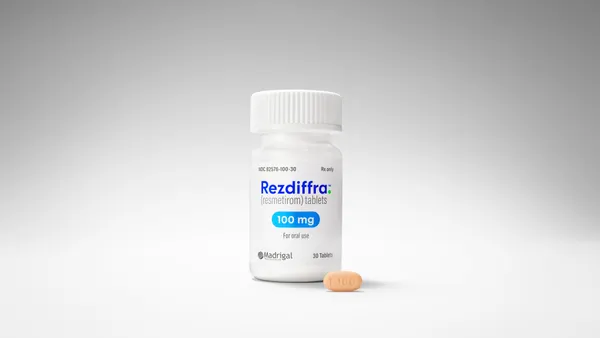Cost Deters Cancer Patients from Seeking Treatment In addition to considerable physical and emotional burdens, cancer patients must also shoulder costly treatments resulting from their disease. A recent Thomson Reuters survey shows that the financial repercussions of cancer are taking a toll on patients and, in some cases, preventing them from receiving recommended treatments. Data from the study, The Cost of Cancer, are based on a survey of 1,767 adults who are actively being treated for breast, prostate, colon, or lung cancers, about 569 of whom are in the later stages of the disease. While 12% of overall respondents with late-stage cancer said they have passed up recommended treatment because it was too expensive, that figure jumped to 25% for those late-stage patients earning less than $40,000 a year. “This survey shows that the cost of cancer treatment is affecting patients’ ability to get the care they need," says Bill Marder, Ph.D., senior VP and general manager, healthcare business, Thomson Reuters. On a related note, 65% of all respondents with late-stage cancer said the out-of-pocket cost of treating their cancer has caused them distress, with that figure rising to 77% among all late-stage cancer patients with an annual income of less than $40,000. A little more than half of patients in this lower economic bracket also noted that their treatment has cost them more out of pocket than they expected when they were initially diagnosed. In fact, 5.7% of individuals in the lower income group said they paid all of their cancer-related medical expenses out of pocket, notably higher than the 2.2% among those earning more than $40,000 a year. For more information, visit thomsonreuters.com. Strategic Pricing Early in the Product Life Cycle Helps Meet Payer Demands Pharmaceutical and biotechnology companies face a number of pricing challenges today that were practically nonexistent a decade ago. Today, life-sciences companies need to be more strategic in their approach to pricing. Independent organizations, such as the National Institute for Health and Clinical Excellence (NICE), keep a close eye on companies’ pricing practices and issue warnings to those that step outside of the bounds of an abstract set of standards. In the past, pharma companies approached price strategy during Phase III of product development. However, new research by Cutting Edge Information signals that this practice is becoming a thing of the past. Data from Outcomes-Based Pharmaceutical Pricing: Meeting Stakeholder Needs reveal that while some companies still initiate pricing plans during ramp-up to product launch, many others have begun strategizing around price in early- and midstage development. Roughly one-quarter of companies launch pricing-specific market research during preclinical or Phase I trials, rather than waiting until Phase II or Phase III, the report says. This move to producing comprehensive health outcomes data earlier in a product’s life cycle has been spurred by evidence-based medicine. To gain leverage with government and third-party payers, companies must tell a strong product value story, complete with pharmacoeconomic data that date back to early product development. Despite the greater focus on early planning, the majority of companies surveyed still wait until Phase II or later to initiate pricing research. But Cutting Edge analysts predict that this share will decrease as companies continue to respond to the demands of their customers. The reimbursement landscape has become very competitive — those companies that fail to shape clinical development around payer demands will find it increasingly difficult to obtain adequate market access. For more information, visit cuttingedgeinfo.com. U.S. Remains Top Market for Drug Launches The United States remains the preferred market for launching new products despite a decline in the number of annual new drug approvals during the past decade, according to recently completed analysis conducted by the Tufts Center for the Study of Drug Development. The analysis, reported in the November/ December 2008 Tufts CSDD Impact Report, found that new U.S. drug approvals dropped to 48 in the 2005 to 2007 period, from a peak of 110 in the 1996 to 1998 period. During 2005-2007, the most recent period for which information is available, drugs first marketed in the United States accounted for 75% of all new drugs approved worldwide, an all-time high, according to Tufts CSDD. This was a marked change from 1987-1989, when only 20% of new drugs were first marketed in the United States. “The United States has become the country of choice to introduce new prescription drugs to the market due, in large part, to the size of the pharmaceutical market, the positive environment for innovation, and the lack of price controls," says Tufts CSDD Director Kenneth Kaitin. Mr. Kaitin notes that the decline in new drug approvals reflects the increasingly time-consuming, risky, and expensive nature of drug development, which is related to the industry’s focus on developing new medicines to treat a host of chronic and complex diseases. Other findings of the Tufts CSDD analysis include: n Combined clinical and approval times for new drugs developed in the United States have dropped to the lowest level since the late 1990s. n Since enactment of the Prescription Drug User Fee Act of 1992, average approval times declined generally and reached their lowest three-year average (1.1 years) in 2005-2007. n Following a jump in clinical times for priority and standard drugs in 2002-2004, those numbers in 2005-2007 returned to levels similar to those observed in 1996-1998 and 1999-2001. n Average total time from IND filing to NDA approval for drugs approved in 2005-07 was longest for endocrine drugs — 8.9 years — and shortest for antineoplastic drugs — 6.1 years. For more information, visit csdd.tufts.edu. Rising risk of Infectious Diseases in America The Trust for America’s Health (TFAH) has released a new report, which finds that at least 170,000 Americans die annually from newly emerging and re-emerging infectious diseases, a number that could increase dramatically during a severe flu pandemic or yet-unknown disease outbreak. Factors including globalization, increased antimicrobial (drug) resistance, and climate and weather changes are contributing to the increased threat. For more information, visit healthyamericans.org. Cancer patients must also shoulder costly treatments resulting from their disease. phase of development at which companies begin pricing market research 24% of companies now initiate pricing research before Phase II of development Today, life-sciences companies need to be more strategic in their approach to pricing. Cross-functional involvement in strategic pricing decisions Marketing Reimbursement/Managed Markets Brand Team Health Economics Market Research New Product Planning Business Development Sales Research & Development Medical Affairs Finance Clinical Operations Executive Team Consultants The United States has become the country of choice to introduce new prescription drugs.
An article from











